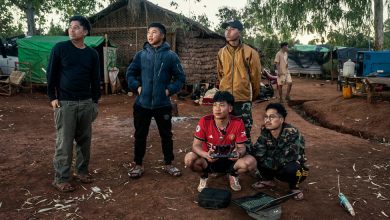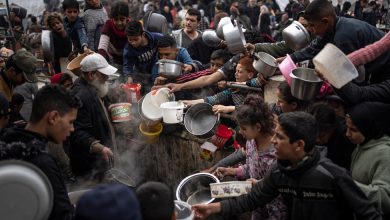In the eastern Donbas, a slew of contradictions.

CHASIV YAR, Ukraine — On a clear spring morning eight years ago, Oleksandr Khainus stepped outside his house to go to work at the town factory when he spotted new graffiti scrawled across his fence. “Glory to Russia,” vandals had written in angry black spray paint. “Putin,” another message said.
Mr. Khainus was perplexed. It was true that Chasiv Yar, the Rust Belt-like town where he has spent his entire life in a region called the Donbas, had long contained many conflicting opinions on its identity. Geographically, the Donbas was part of Ukraine, no question, but it was so close to Russia and so tied to it historically that many maintained that their true home really lay eastward.
“It was the type of stuff you’d argue about over the dinner table,” he said. “But nothing that anyone would get violent over.”
Mr. Khainus’s optimism now seems almost quaint.
In the next few months in 2014, pro-Russia protests exploded. Armed separatists seized some parts of the Donbas, including Chasiv Yar right under the authorities’ noses. Two so-called People’s Republics were declared. Russian troops stormed in.
Vladimir V. Putin, Russia’s leader, turned this patch of Eastern Europe into a personal project, sowing the seeds for an explosion of bloodshed that would spawn the most far-reaching war in generations. It was the Donbas that became Mr. Putin’s pretext for a full-scale invasion of Ukraine. And now it is heating up again.
The Ukrainians have just pulled off a masterful offensive in the Kharkiv region, in Ukraine’s northeast, where town after town fell without a shot. Now they are heading south. Columns of dark green military trucks and American-made rocket launchers are thundering down the long, straight highways into the Donbas. But they will have a much harder fight on their hands.
To understand the Donbas, and how it became the benighted chunk of territory that Mr. Putin wants so badly, is to see it as an integral piece of a grand strategy to resurrect elements of the Soviet world. Some people living here welcome that; others cannot imagine anything worse.
The region is full of contradictions like these, both rustic and industrial, beautiful and blood-soaked, enormously important to the national economy but in terminal decline. For the past eight years, Mr. Putin has thoroughly destabilized this complicated corner of Ukraine.
Then, on Feb. 24, 2022, he turned its problems into a global crisis.




